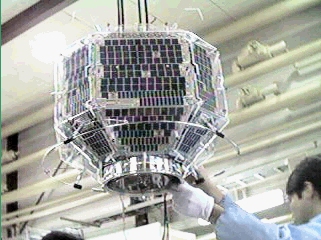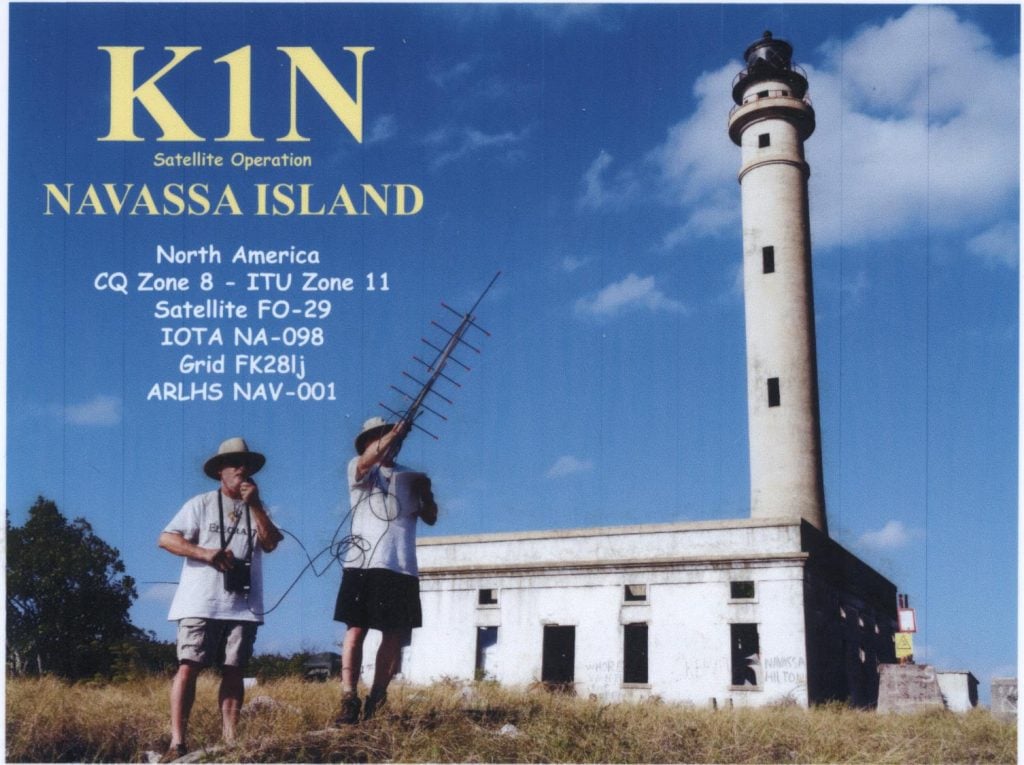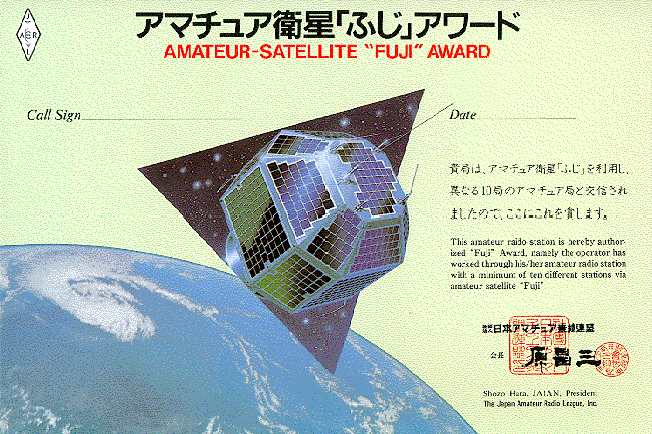Vice President Engineering Jerry Buxton, N0JY, gave a live “tour” of the RadFxSat CubeSat on August 20 from Fox Labs, describing various aspects of the flight model, construction, and testing.
The video playback is available on YouTube.
Vice President Engineering Jerry Buxton, N0JY, gave a live “tour” of the RadFxSat CubeSat on August 20 from Fox Labs, describing various aspects of the flight model, construction, and testing.
The video playback is available on YouTube.
UPDATE: The DXpedition has been postponed by the Venezuelan Navy. Check back for further updates.
The YX0V DXpedition to Aves Island, scheduled for August 31, 2016 – September 10, 2016, will include satellite operations. Aves Island, a dependency of Venezuela located west of Dominica and Guadeloupe in the Caribbean Sea (grid FK85eq), is currently the 17th most wanted DXCC entity on the Club Log DXCC Most-Wanted List and was last on the air in 2007. It was active on satellite during the YV0D expedition in 2004, but only three QSOs were made before the DXpedition was cut short due to rain.
Satellite plans are yet to be finalized. Please check back for further details. YX0V information can be found on their website at http://yx0v.com/, on Twitter at https://twitter.com/yx0v2016, and on Facebook at https://www.facebook.com/groups/yx0v2016/
Happy 20th Birthday to Fuji-OSCAR 29! FO-29, known as JAS-2 (Japan Amateur Satellite #2) prior to launch, was built by the Japan Amateur Radio League and launched on August 17, 1996 from Tanegashima Space Center on an H-II launch vehicle into a 1,323 km x 800 km orbit with an inclination of 98.5 degrees. In addition to a 100 kHz wide analog Mode V/u (JA) transponder, the satellite also includes a packet BBS and digitalker. While the packet BBS and digitalker are non-functional, the analog transponder continues to provide excellent service to the present day.

With an apogee of 1,323 km, FO-29 provides satellite operators with excellent DX opportunities every few months when the passes over a certain area are at or near apogee. Intercontinental QSOs are regularly reported, including between Japan and Alaska as well as North America and Europe. Although the theoretical maximum range at apogee is 7,502 km, the excellent sensitivity of the transponder as well as it’s strong and solid 1 watt downlink signal allows that distance to be stretched when the conditions are suitable. The longest distance QSO made via FO-29’s analog transponder occurred on August 27, 2015 with an unscheduled 7,599.959 km contact between KG5CCI in Arkansas and F4CQA in France.
The sensitivity of the transponder and Mode V/u configuration also allow for the effective use of minimal equipment. QSOs have been reported using a single Yaesu FT-817 transceiver and the stock rubber duck antenna. Taking advantage of the large footprint and ease of use, the K1N DXpedition to Navassa Island made a total of 29 QSOs during two passes of FO-29 on February 12, 2015 using a single Yaesu FT-817 along with an Arrow antenna, activating that extremely rare DX entity on satellite for the first time since 1978. To this day, FO-29 remains the most widely used linear transponder satellite and an ideal satellite for beginners looking to become active on the linear transponder satellites to try first. The FO-29 control station maintains a blog (in Japanese) at http://blog.goo.ne.jp/fo-29. The JARL also offers an award for confirmed QSOs with ten different stations via FO-29.


Members of the Great South Bay ARC headed by Mike Sartoretti, KC2SYF, have obtained a permit from the National Park Service to operate from President’s Park (The White House) for the ARRL National Parks on the Air event. The operating location will be the southeast side of the Ellipse. The call sign for the operation will be KC2SYF and the park designator is DZ10.
Paul Stoetzer, N8HM, will be providing satellite operations and will be active on all voice satellites (SSB/FM) from 1400 UTC to 2100 UTC on Friday, August 5th and Saturday, August 6th. The pass list is below:
WinAos QTH: -77.0/38.9 T#: 14096 Sat.: 9 [Standard]
———————————————————-
Day Objects AOS (U) LOS Period maxEl AZ
———————————————————-
05.08.2016 AO-85 14:50 15:03 13 25 177 – 045
05.08.2016 FO-29 15:29 15:42 13 20 125 – 001
05.08.2016 AO-85 16:30 16:44 14 44 228 – 027
05.08.2016 FO-29 17:13 17:27 14 48 181 – 341
05.08.2016 SO-50 17:47 17:58 11 18 342 – 108
05.08.2016 UKUBE-1 18:05 18:16 11 32 001 – 217
05.08.2016 AO-07 18:24 18:43 19 27 118 – 351
05.08.2016 SO-50 19:27 19:40 13 56 324 – 160
05.08.2016 AO-07 20:14 20:35 21 69 169 – 342
06.08.2016 AO-73 13:59 14:10 11 40 021 – 176
06.08.2016 AO-85 15:15 15:29 14 58 198 – 036
06.08.2016 AO-73 15:36 15:45 09 17 349 – 234
06.08.2016 FO-29 16:18 16:32 14 54 152 – 352
06.08.2016 UKUBE-1 16:46 16:57 11 31 025 – 171
06.08.2016 AO-85 16:57 17:09 12 22 252 – 021
06.08.2016 AO-07 17:27 17:42 15 12 089 – 356
06.08.2016 FO-29 18:04 18:17 13 16 208 – 330
06.08.2016 SO-50 18:12 18:25 13 38 335 – 131
06.08.2016 AO-07 19:15 19:35 20 55 143 – 348
06.08.2016 SO-50 19:53 20:04 11 21 313 – 183
Planned frequencies for the linear transponders are as follows:
AO-7B – 145.940 MHz
AO-73 – 145.965 MHz
FO-29 – 435.865 MHz
UKube-1 – 145.945 MHz
In addition to satellite operations, there will also be two 100 watt HF stations operating split. Bands will be 40, 20, and possibly 10 meters as well as 2 meters simplex.
QSL via LoTW.